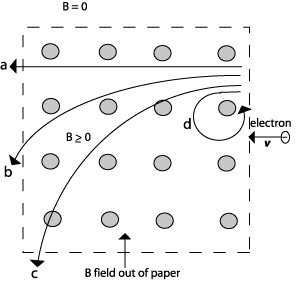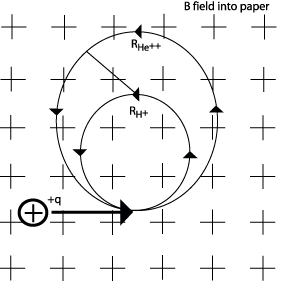|
|
|
Motion of Charged Particles
in Magnetic Fields
|
| Solutions |
|
Q1: On your whiteboard, make four illustrations of the electrons' path inside the dotted region, one for each of the following field strengths: (a) B = 0 inside the region marked by the dotted-line(b) weak B field inside the region marked by the dotted-line (c) medium strength B field inside the region marked by the dotted-line (d) very strong B field inside the region marked by the dotted-line
Q2: On your whiteboard, calculate the relative sizes of the two circular paths and sketch them to scale showing the direction of travel for each. Recall equations for centripetal acceleration and force. Give explanations for your reasoning.
|
|
|
|
|

